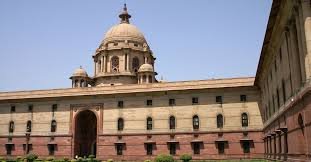[ad_1]
Shalini Dharmani v. State of Himachal Pradesh (2024 SCC OnLine SC 653)
1. Facts
- Petitioner: Ms. Shalini Dharmani, an Assistant Professor in the Department of Geography at Government College, Nalagarh, Himachal Pradesh.
- Child’s Condition: Her 14-year-old son suffers from Osteogenesis Imperfecta, a rare genetic disorder requiring frequent hospitalisation and surgical interventions from early childhood to ensure a viable life.
- Leave Situation: Having exhausted all available sanctioned leaves (casual, sick, earned), Ms. Dharmani sought to avail Child Care Leave (CCL) under Rule 43-C of the Central Civil Services (Leave) Rules, 1972.
- Central Extension: A 2010 Office Memorandum by the Union Government extended CCL eligibility up to 22 years of age for children with disabilities, based on Rule 43-C.
- State Policy Gap: Himachal Pradesh had deleted Rule 43-C from its state service leave rules (circa 2012), disallowing Ms. Dharmani’s CCL application. The Principal of her college communicated that deletion meant the state need not honor CCL.
- High Court Rejection: The Himachal Pradesh High Court declined her petition under Article 226, reasoning that the absence of Rule 43-C in state rules absolved the state from granting CCL.
2. Issues
- Applicability of Central CCL Rules: Does Rule 43-C of the Central CCS (Leave) Rules apply to state government employees in Himachal Pradesh despite state deletion?
- Age Extension for Disability: Does the 2010 Central O.M. expanding CCL up to age 22 for children with disabilities apply to state employees absent adoption?
- Constitutional Rights: Does refusal to grant CCL infringe her fundamental rights under Articles 14, 15, 19(1)(g), and 21 of the Constitution?
- Role of the RPwD Act: Can the Rights of Persons with Disabilities Act, 2016 guide interpretation of leave policy in favour of equitable access for caregivers?
3. Contention
3.1 Petitioner’s Arguments
- Central Rule is Guiding: Despite state deletion, Rule 43-C and the 2010 O.M. are guiding norms, especially for employees performing quasi-Union functions.
- Disability-based Extension: The extension to age 22 is a statutory benefit, not a discretionary privilege, and ought to be honoured, especially in extreme caregiving cases.
- Constitutional Mandate: Denial of CCL is a violation of Article 14 (equality), Article 15 (non-discrimination on gender basis), Article 19(1)(g) (right to work), and Article 21 (right to life and personal liberty).
- RPwD Act’s Salience: The RPwD Act envisages state responsibility to provide reasonable accommodations and support systems to enable persons with disability—and their caregivers—to live full lives. This obligation must extend into state employment policies.
3.2 Respondent (State) Argument
- Deletion Doctrine: After formally deleting Rule 43-C from state service rules, the state is not bound by CCL provisions, including central extensions.
- Autonomy in Leave Policy: State leave rules are distinct autonomous instruments; central leave extensions are not binding unless adopted.
- Policy Space: The judiciary should avoid encroaching upon state policy-making and funding priorities.
4. Rationale of Supreme Court Decision
A bench headed by CJI D.Y. Chandrachud and Justice J.B. Pardiwala largely favoured the petitioner, laying down important legal doctrines and policy directions:
4.1 Guiding vs. Binding Norms
- While Rule 43-C has been withdrawn by the state, the Court held that constitutional values and fundamental rights constrain executive discretion in leave policy—especially when it impairs gender equality and ability to work.
4.2 Women’s Workforce Participation as a Constitutional Right
- The Court reaffirmed that women’s participation in public employment is not a matter of administrative largesse but a constitutional entitlement, protected by Articles 14, 15, 19(1)(g), and 21.
- Denial of CCL could compel women to exit the workforce, particularly mothers with special needs children, which the Court deemed contrary to substantive equality.
4.3 RPwD Act: Interpretive and Implementative Tool
- The Court noted the petitioner specifically invoked the RPwD Act, 2016—a legislated commitment by Parliament recognising “benchmark disabilities” and mandating reasonable accommodation across societal domains.
- The Court stressed that a disability-inclusive leave scheme aligns with RPwD Act’s object “to promote real, sustainable inclusion of persons with disabilities.”
4.4 Judicial Oversight versus Policy-making
- Acknowledging the state’s policy domain, the Court pointed out that state policies must conform to constitutional values and legislative mandates, such as the RPwD Act.
- Thus, to reconcile autonomy and oversight, the Court directed constitution of a high-level committee to revisit CCL policy with reference to RPwD obligations.
4.5 Immediate Relief
- The Court instructed authorities to favourably consider any interim applications under Rule 32, thereby providing immediate relief to the petitioner.
4.6 Committee Mandate & Timeline
- Composition:
- Chief Secretary (chair),
- State Commissioner under RPwD Act,
- Secretaries in Women & Child Development and Social Welfare departments.
- Role: To liaise with Union Government and recommend a leave policy in line with RPwD principles.
- Timeline: Report due by 31 July 2024; next hearing set 5 August 2024.
5. Defects or Gaps in Law – Critical Analysis
5.1 Federal Division & Leave Autonomy
- The judgment intentionally skirts the thorny question of whether central leave rules must be adopted into state service regulations. The lack of clarity on the union-state legislative divide leaves potential for limbo—especially since states may simply delete beneficial norms unless actively harmonised. A future legislative reform may be necessary to standardise core employee protections irrespective of executive nod.
5.2 Reliance on RPwD Act Without Specific Mandate
- The RPwD Act places a constitutional duty but lacks express stipulation regarding caregiver leave. The Court’s expansive interpretive reach, feeding from purposive construction, underscores heavy judicial activism—potentially criticised for policy crafting in lieu of legislative action. Critics might argue this space-shift invites executive pushback or inertia.
5.3 Absence of Formal Binding on Temporary Relief
- The Court “directed” interim consideration under Rule 32, but did not mandate mandatory leave grant. This leaves room for administrative discretion, diluting immediate practical effect. Arguably, a stronger directive (e.g., grant interim CCL pending policy finalization) might have better safeguarded the petitioner.
5.4 Avoidance of Age-Extension Verification
- Though central O.M. extends leave up to age 22 for differently-abled children, the Court did not conclusively hold whether that extension is binding, leaving this crucial calculation unresolved. Mothers of children aged 18–22 with disabilities remain in uncertain territory.
5.5 Over-reliance on Committee-Based Remediation
- While forming a committee is prudent for systemic evaluation, such commissions often face delays or produce diluted recommendations. Absent binding legal obligations, report timelines may slip. Institutional inertia remains a significant risk.
6. Inference & Implications
6.1 Affirmative Judicial Posture on Substantive Equality
- The judgment underscores the shift from formal equality (equal provision) to substantive equality (equality in outcomes and participation), particularly for women and persons with disabilities. It affirms women’s inclusion in government employment as a constitutional mandate, not discretionary privilege.
6.2 Disability Rights as Mainstream Social Policy
- By linking leave benefits to the RPwD Act, the Supreme Court positions caregiving support as an essential component of disability-inclusive policy. This signals a normative baseline: government employers must mainstream disability accommodations and not relegate these concerns to welfare departments alone.
6.3 Blueprint for Other States
- Himachal Pradesh’s deletion of Rule 43-C is not sui generis. Several states have still not adopted this provision or expanded it for disabled children. This judgment sends a clear signal: state leave rules must be re-examined through constitutional and RPwD lenses.
6.4 Catalyst for Private-Sector Policy Reform
- Central public policy often shapes private human resource practices. With SC classifying CCL as constitutional entitlement, advocacy for statutory maternity/parental leave norms in the private sector could gain momentum.
6.5 Prompt for Legislative Standardisation
- Potential ripple effect: impetus for Parliament or union government to pass a uniform Parental Care (Leave and Services) Act guaranteeing baseline rights for all caregivers—across sectors and geographies.
6.6 Shadow of Administrative Delay
- The ultimate effectiveness hinges on how rapidly and robustly the committee acts, and whether recommendations are actionable. The method mirrors prior judicially mandated committees that produced progressive norms but faltered in execution (e.g., class action matters).
7. Concluding Observations
- Shalini Dharmani marks a noteworthy judicial intervention that weaves together constitutional gender equality, disability rights, and administrative policy.
- The Court’s affirmation—that work participation is a constitutional entitlement—elevates caregiving support from administrative benefit to constitutional necessity.
- Its creative deployment of the RPwD Act broadens interpretation and nurtures a holistic approach to welfare—one that recognises the caregiver’s burden as intrinsic to disability rights.
- The state’s policy autonomy is upheld, but within constitutional guardrails—mandating harmonisation with national values.
- Yet, substantive enforcement remains pending, as the policy’s final form and implementation rest heavily on the efficacy of the committee’s report and follow-up.
- More legislative clarity is required to prevent this judgment from being a symbolic win without real-world transformation.
Citation:
- Shalini Dharmani v. State of Himachal Pradesh, 2024 SCC OnLine SC 653 (India).
- Supreme Court of India, Order dated Apr. 22, 2024, in Shalini Dharmani v. State of Himachal Pradesh & Ors., SLP (C) No. 16864/2021.
- Ministry of Personnel, Public Grievances and Pensions, Department of Personnel and Training, Office Memorandum No. 13018/1/2010-Estt.(Leave) dated Mar. 30, 2010.
- Central Civil Services (Leave) Rules, 1972, Rule 43C.
- Rights of Persons with Disabilities Act, No. 49 of 2016, Acts of Parliament, 2016 (India).
- Constitution of India arts. 14, 15, 19(1)(g), and 21.
- LawBeat, PDF of Supreme Court Order, available at https://www.lawbeat.in (last visited July 1, 2025).
Name: Anjali Chaudhary Co
- College: Amity university, noida of Himachal Pradesh & Ors., SLP (C) No. 16864/2021, Order dated April 22, 2024 (India), available PDF at LawBeat (on LawBeat website).
- LawBeat we
[ad_2]
Source link

